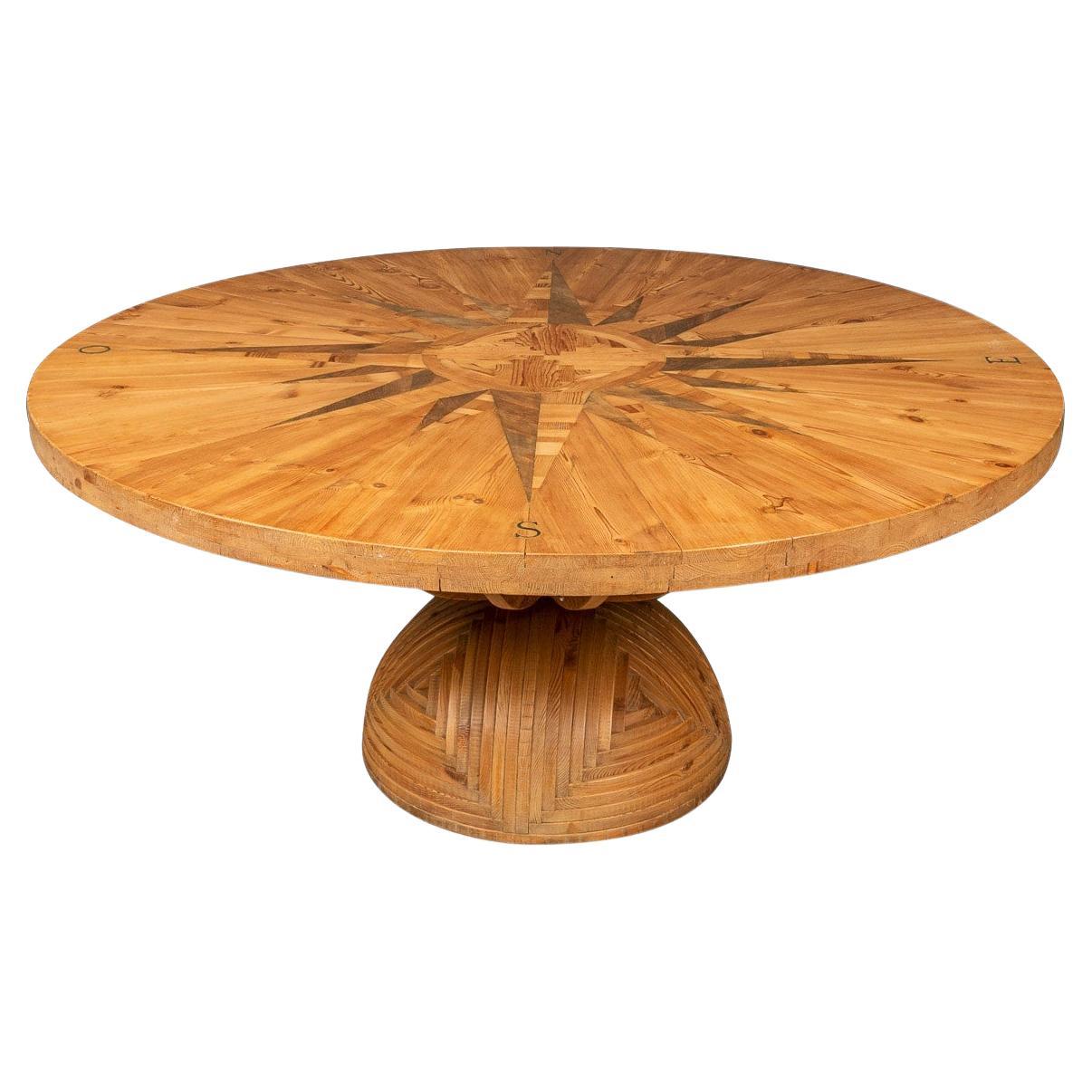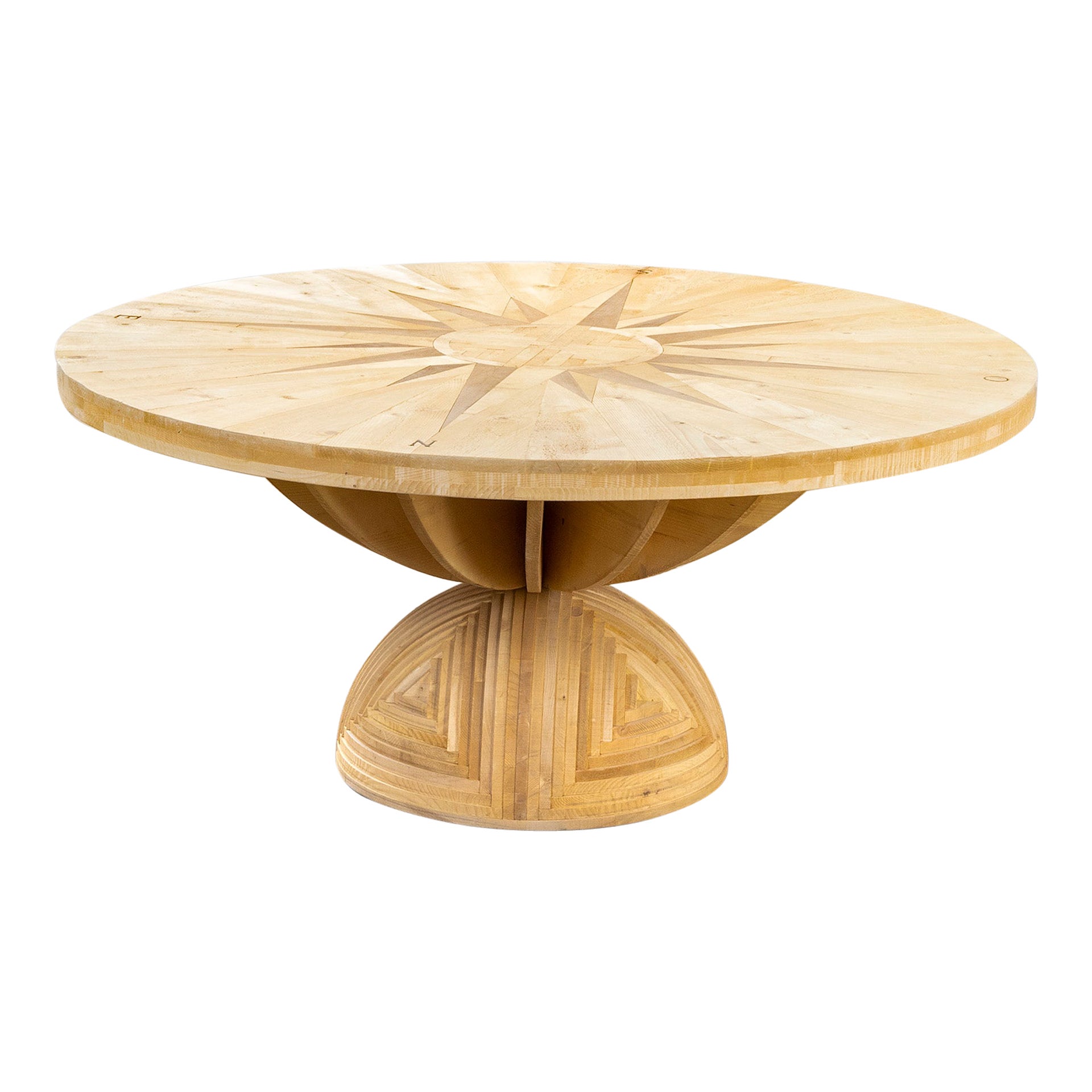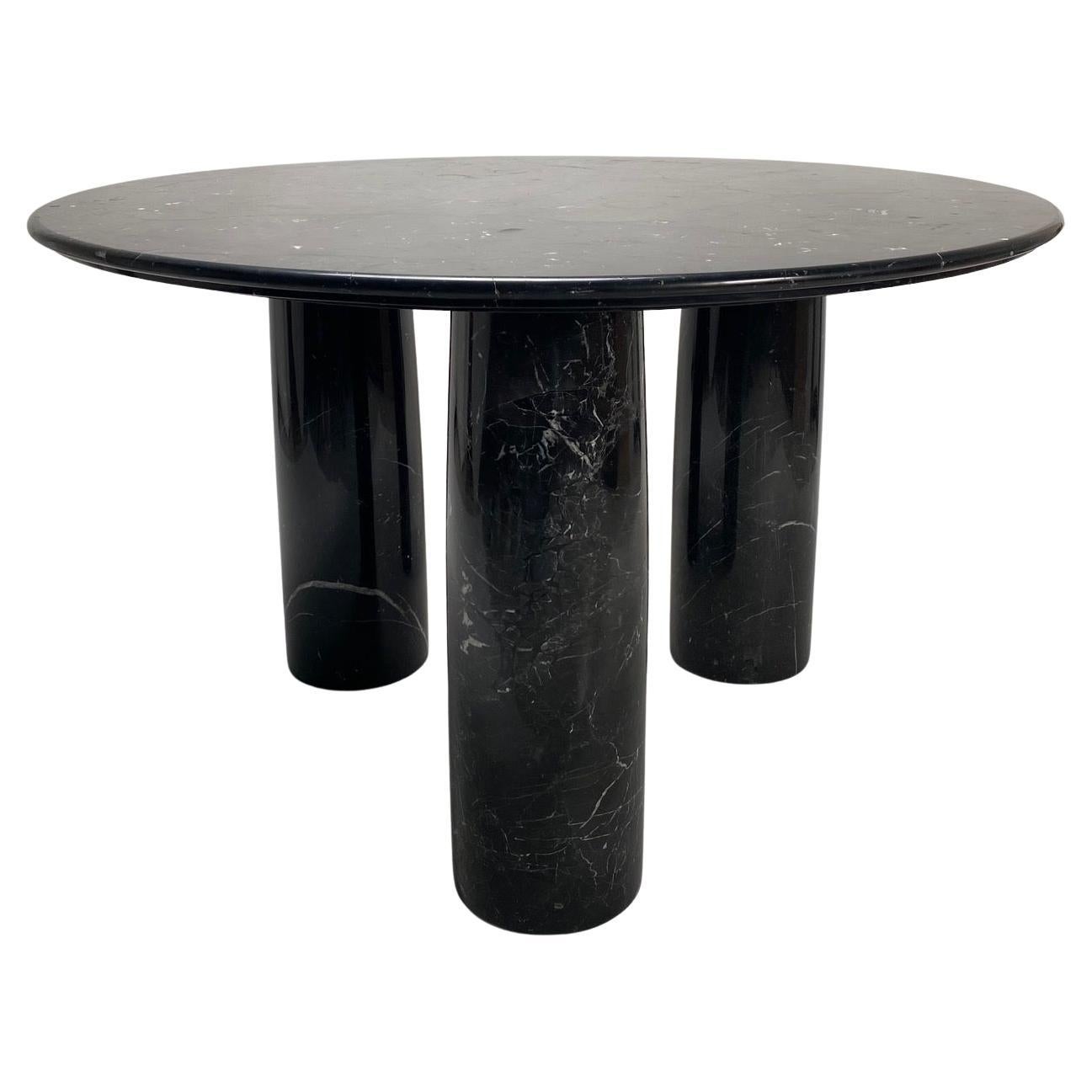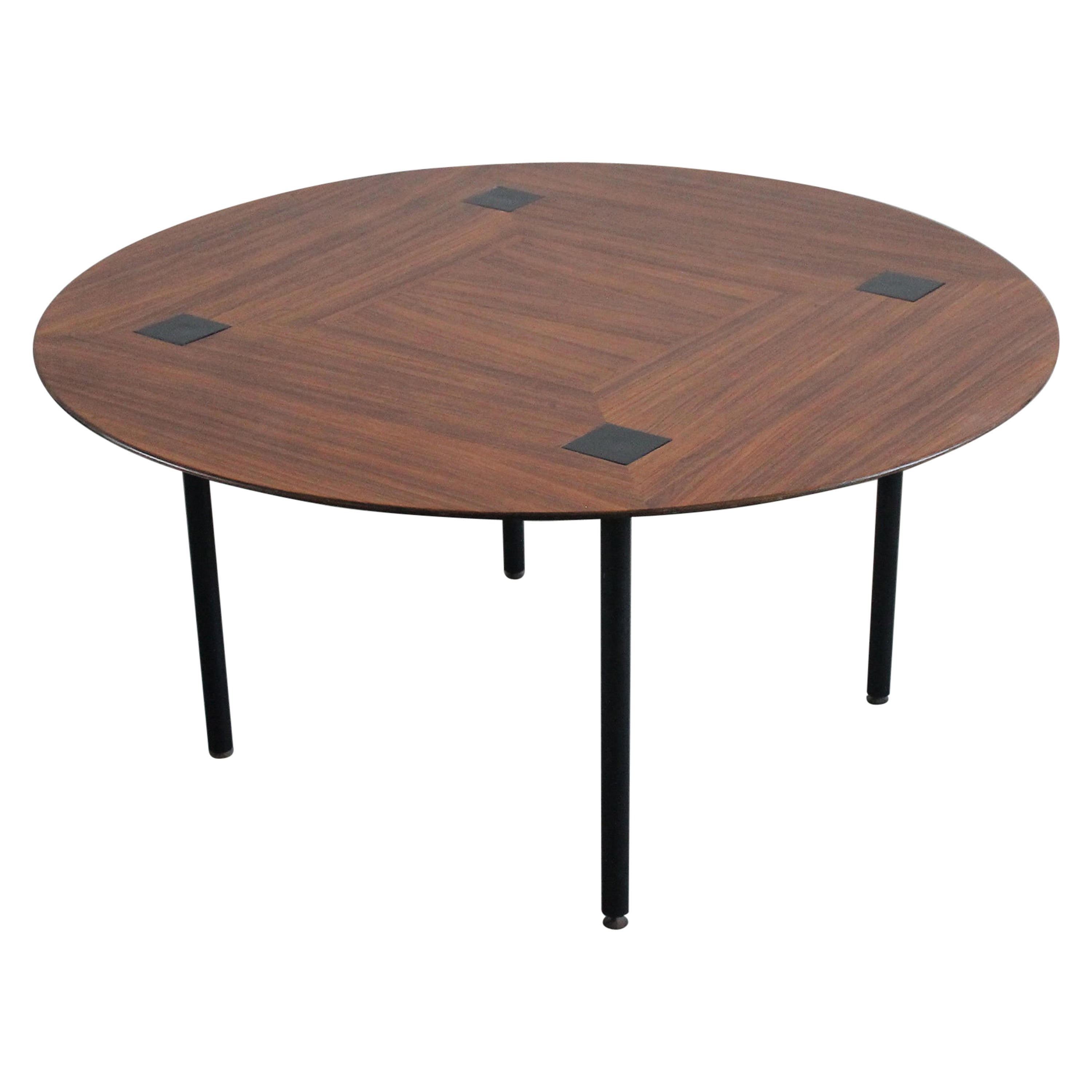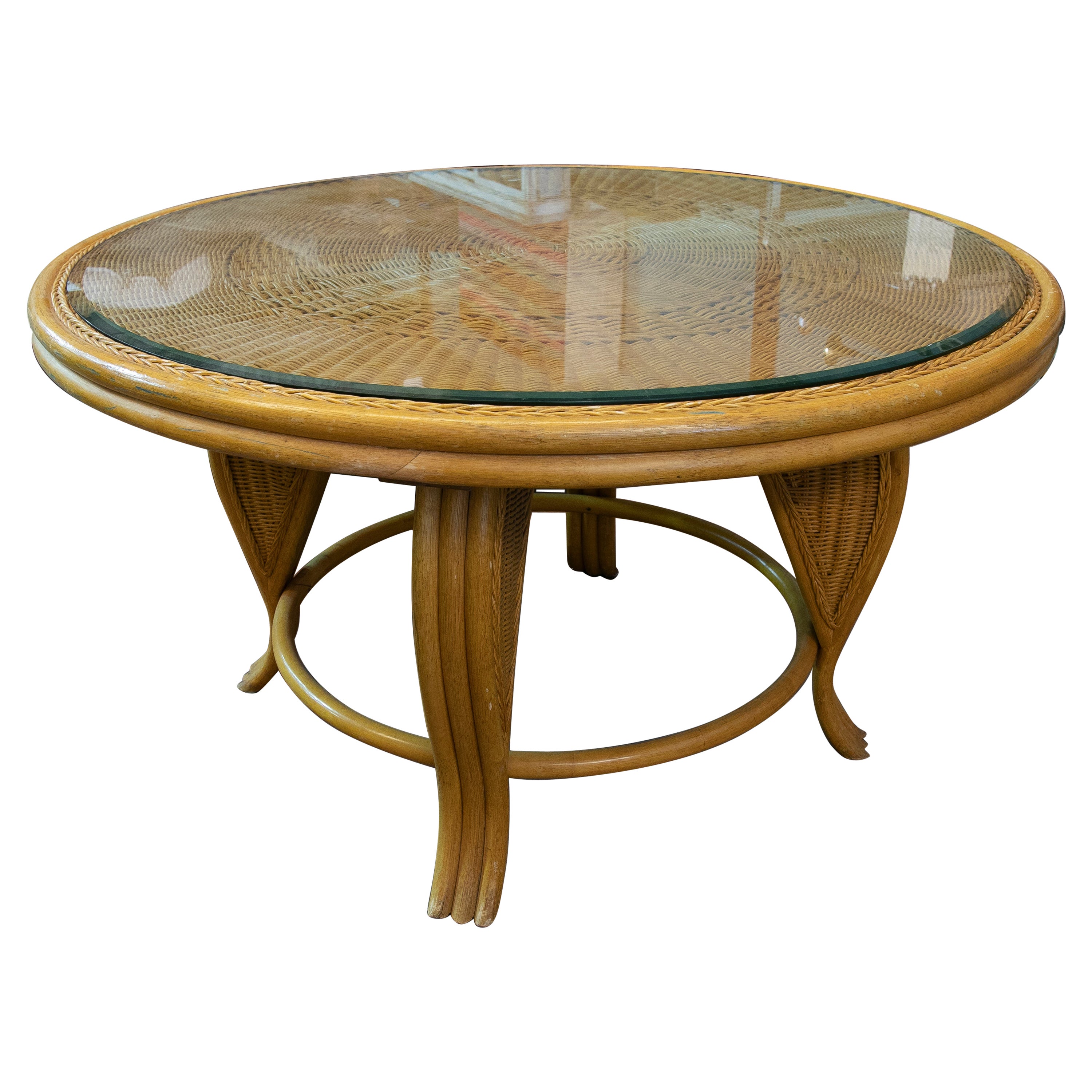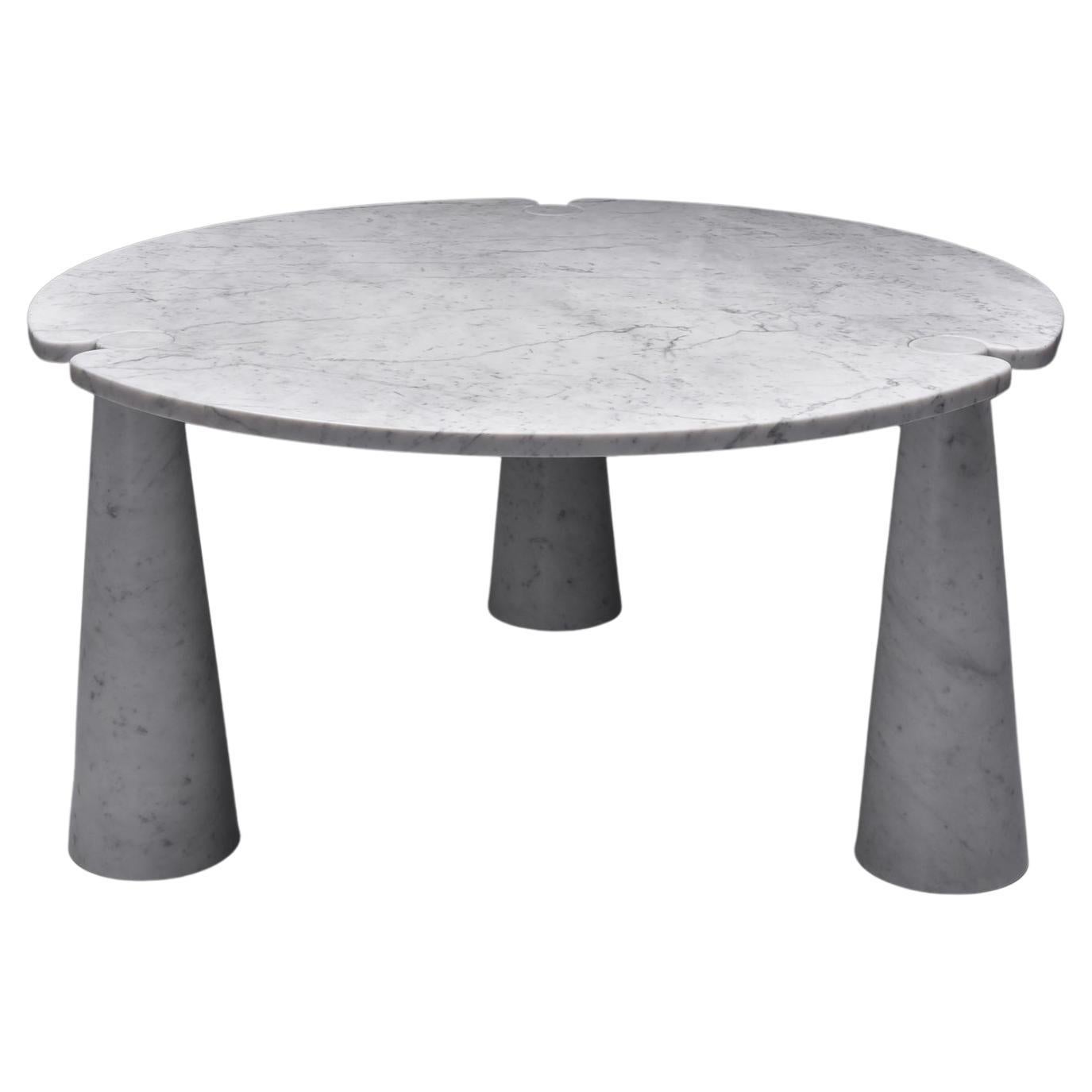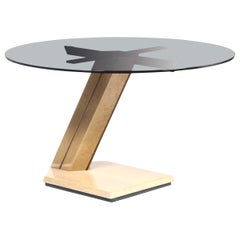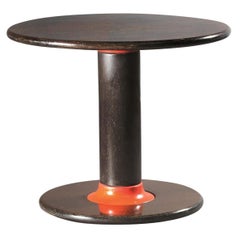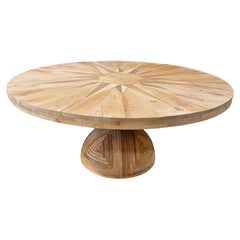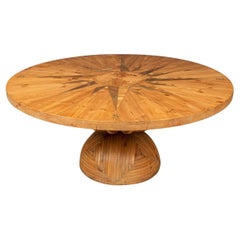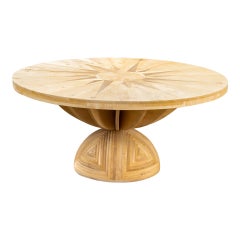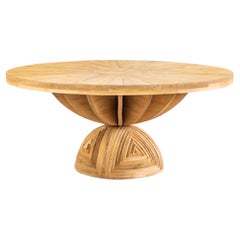
Ceroli Mario Rosa Dei Venti Round Large Table in Pinewood by Poltronova 1970s
View Similar Items
Ceroli Mario Rosa Dei Venti Round Large Table in Pinewood by Poltronova 1970s
About the Item
- Creator:Poltronova (Manufacturer),Mario Ceroli (Designer)
- Dimensions:Height: 28.75 in (73 cm)Diameter: 64.57 in (164 cm)
- Style:Post-Modern (Of the Period)
- Materials and Techniques:
- Place of Origin:
- Period:
- Date of Manufacture:1970s
- Condition:Wear consistent with age and use.
- Seller Location:Montecatini Terme, IT
- Reference Number:1stDibs: LU5304223493902
Poltronova
Poltronova is known for embracing the creativity that opposites can introduce to a space. Its radical modernist furniture and lighting fixtures are simultaneously grounded in classic aesthetics and inspired by what were then new and provocative artistic movements in mid-century Italy, when the company was founded. This tension resulted in unique and extraordinary pieces at the manufacturer, from eccentric, glove-shaped armchairs to striking dining tables that feature a mix of materials and textures.
Italian designer Sergio Cammilli founded Poltronova in Tuscany in 1957. That same year, it won the Compasso d’Oro for the Panchetto chair designed by Luciano Nustrini. Revolutionary Italian architect Ettore Sottsass — a maestro of postmodern design who would later establish the Memphis Group — came on board as an art director in 1958. Poltronova manufactured many of his furniture and ceramic designs. Sottsass’s lighting, seating and other works for Poltronova showcase the designer’s bold experimentation with solid wood, glass, metal and laminate materials.
Other established names in Italian furniture design collaborated with Poltronova’s Sottsass and Cammilli, including Giovanni Michelucci, Gae Aulenti and Angelo Mangiarotti. However, the company truly set itself apart in its collaborations with Superstudio and Archizoom Associati, groups that were part of an irreverent, avant-garde movement in art and design that took shape during the 1960s in Florence, Turin and Milan. Collectives associated with the movement — which would one day be called Italian Radical design — drew on Pop art and minimalism and explored working with unconventional materials to create colorful, quirky and uniquely shaped objects and furnishings. At the time, Poltronova also worked with up-and-coming names in the art world, like painter Max Ernst and sculptor Mario Ceroli.
Poltronova showcased its groundbreaking designs in many exhibitions, such as “La Casa Abitata,” which was held in Florence in 1965. At Milan's Eurodomus trade show in 1970, Poltronova debuted an entire bedroom collection designed by Sottsass — including his sensuous Ultrafragola mirror. The brand’s furnishings were included in a 1972 exhibition at New York’s Museum of Modern Art called "Italy: The New Domestic Landscape," and in 1977, Poltronova again won the Compasso d’Oro for a book called Fare Mobili con Poltronova (Making Furniture with Poltronova).
Poltronova's enduring and acclaimed furniture designs came to be loved far outside Italy. During the 1960s, importer Charles Stendig represented the company and helped introduce it to the American market.
In 2005, Poltronova established the Centro Studi Poltronova to recreate some of the company's iconic furniture. The brand has also recently collaborated with English architect Nigel Coates, who worked with a Poltronova master craftsman in Italy to design a series of limited-edition furniture in 2011, including the Domo chair.
On 1stDibs, find vintage Poltronova tables, seating, storage cabinets and more.
- Ettore Sottsass Dining Table in Wood and Black Lacquered Metal by Poltronova 50sBy Poltronova, Ettore SottsassLocated in Montecatini Terme, ITRound dining table or living room table with four legs in black lacquered metal, table top in wood and brass details. The peculiar tabletop presents a beautiful decoration due to t...Category
Vintage 1950s Italian Mid-Century Modern Dining Room Tables
MaterialsMetal, Brass
- Giovanni Offredi Sunny Round Pedestal Table in Wood and Glass by Saporiti 1970sBy Giovanni Offredi, SaporitiLocated in Montecatini Terme, ITSunny pedestal table with a structure in wood and a round-shaped tabletop in smoked glass, designed by Giovanni Offredi and manufactured by Saporiti during the 1970s. Giovanni Offredi was a prominent Italian furniture and product designer of the second half of the 20th century. As opposed to most of the other Italian furniture designers of his time, Giovanni Offredi was not an architect, nor did he start designing early in his professional career. Instead, Offredi partially fits the career path of some of the talented contemporary designers who pursue product design outside of formal education in architecture. The earliest furniture design work known by Giovanni Offredi consists of exemplary furnishings made specifically for some of wealthy families in Milan. Such is the case of the works done by Offredi for Casa C., in 1960, in Gorgonzola, a small town 14 miles from Milan. These works were designed with a surprisingly minimal simplicity and elegance, and they also clearly display a hallmark of his design work with the use of angular lines and exposed metal or wood frames—not unlike some of the modern Scandinavian designs of the time. In the late 1960s, Giovanni Offredi met Sergio Saporiti, the owner of an Italian design shop and furniture maker Saporiti, and in 1970, Offredi formalized a partnership with the furniture maker. This partnership would be long and successful and resulted in many furniture designs of distinct precision that were clearly modern and innovative and that went on to enjoy considerable commercial success. The most prominent furniture designs that Offredi made for Saporiti include the Paracarro table...Category
Vintage 1970s Italian Post-Modern Dining Room Tables
MaterialsSmoked Glass, Wood
- Ettore Sottsass Rocchetto Round Side Table in Walnut Wood by Poltronova 1964By Poltronova, Ettore SottsassLocated in Montecatini Terme, ITRocchetto side table realized in lacquered walnut wood with bright orange decorations (under the table top and on the base), it was designed by Ettore Sottsass and manufactured by Po...Category
Vintage 1960s Italian Post-Modern Tables
MaterialsWood, Plastic, Walnut
- Vittorio Introini Oval Shaped Dining Table in Steel ang Glass by Saporiti 1970sBy Vittorio Introini, SaporitiLocated in Montecatini Terme, ITVery rare dining table with a beautiful base in steel and an oval-shaped top in thick glass, designed by Vittorio Introini and manufactured by Saporiti in 1970s. Vittorio Introini...Category
Vintage 1970s Italian Post-Modern Dining Room Tables
MaterialsSteel
- Vico Magistretti Tema Square Table in Black Lacquered Wood by B&B 1970sBy B&B Italia, Vico MagistrettiLocated in Montecatini Terme, ITSquare table model Tema with structure in black lacquered wood and diagonal inserts in natural spruce on top. Designed by Vico Magistretti and produced by B&B, 1973, Italy. Lict...Category
Vintage 1970s Italian Mid-Century Modern Dining Room Tables
MaterialsWood, Spruce
$2,167 Sale Price55% Off - Franco Albini TL30 Round Table in Metal and Wood for Poggi Pavia 1950s ItalyBy Franco Albini, PoggiLocated in Montecatini Terme, ITRound table model TL30 with black lacquered metal base and a wooden top. Designed by Franco Albini for Poggi, Pavia in 1950s. After spending his childhood and part of his youth in Robbiate in Brianza, where he was born in 1905, Franco Albini moved with his family to Milan. Here he enrolled in the Faculty of Architecture of the Polytechnic and graduated in 1929. He starts his professional activity in the studio of Gio Ponti and Emilio Lancia, with whom he collaborates for three years. He probably had his first international contacts here In those three years, the works carried out are admittedly of a twentieth-century imprint. It was the meeting with Edoardo Persico that marked a clear turning point towards rationalism and the rapprochement with the group of editors of “Casabella”. The new phase that that meeting provoked starts with the opening of the first professional studio in via Panizza with Renato Camus and Giancarlo Palanti. The group of architects began to deal with public housing by participating in the competition for the Baracca neighborhood in San Siro in 1932 and then creating the Ifacp neighborhoods: Fabio Filzi (1936/38), Gabriele D’Annunzio and Ettore Ponti (1939). Also in those years Albini worked on his first villa Pestarini. But it is above all in the context of the exhibitions that the Milanese master experiments his compromise between that “rigor and poetic fantasy” coining the elements that will be a recurring theme in all the declinations of his work – architecture, interiors, design pieces . The opening in 1933 of the new headquarters of the Triennale in Milan, in the Palazzo dell’Arte, becomes an important opportunity to express the strong innovative character of rationalist thought, a gym in which to freely experiment with new materials and new solutions, but above all a “method”. Together with Giancarlo Palanti, Albini on the occasion of the V Triennale di Milano sets up the steel structure house, for which he also designs the ‘furniture. At the subsequent Triennale of 1936, marked by the untimely death of Persico, together with a group of young designers gathered by Pagano in the previous edition of 1933, Franco Albini takes care of the preparation of the exhibition of the house, in which the furniture of three types of accommodation. The staging of Stanza per un uomo, at that same Triennale, allows us to understand the acute and ironic approach that is part of Albini, as a man and as a designer: the theme addressed is that of the existenzminimum and the reference of the project is to the fascist myth of the athletic and sporty man, but it is also a way to reflect on low-cost housing, the reduction of surfaces to a minimum and respect for the way of living. In that same year Albini and Romano designed the Ancient Italian Goldsmith’s Exhibition: vertical uprights, simple linear rods, design the space. A theme, that of the “flagpole”, which seems to be the center of the evolution of his production and creative process. The concept is reworked over time, with the technique of decomposition and recomposition typical of Albinian planning: in the setting up of the Scipio Exhibition and of contemporary drawings (1941) the tapered flagpoles, on which the paintings and display cases are hung, are supported by a grid of steel cables; in the Vanzetti stand (1942) they take on the V shape; in the Olivetti store in Paris (1956) the uprights in polished mahogany support the shelves for displaying typewriters and calculators. The reflection on this theme arises from the desire to interpret the architectural space, to read it through the use of a grid, to introduce the third dimension, the vertical one, while maintaining a sense of lightness and transparency. The flagpole is found, however, also in areas other than the exhibition ones. In the apartments he designed, it is used as a pivot on which the paintings can be suspended and rotated to allow different points of view, but at the same time as an element capable of dividing spaces. The Veliero bookcase...Category
Vintage 1950s Italian Mid-Century Modern Dining Room Tables
MaterialsMetal
$2,428 Sale Price20% Off
- Ceroli Mario Rosa Dei Venti Round Large Table in Pinewood by Poltronova, 1970sBy Mario Ceroli, PoltronovaLocated in Los Angeles, CAThe 1st EDITION Large Rosa dei Venti table, designed by the renowned artist Mario Ceroli in the 1970s and crafted by Poltronova, is a truly remarkable piece of art and furniture. Thi...Category
Vintage 1970s Italian Mid-Century Modern Dining Room Tables
MaterialsBrass
- 20th Century "Rosa Dei Venti" Table By Mario Ceroli For Poltronova, Italy c.1970By Mario Ceroli, PoltronovaLocated in Royal Tunbridge Wells, KentA stunning “Rosa Dei Venti“ table designed by Mario Ceroli and produced by Poltronova. The table is made from intersected pine segments with walnut and pine detailing and bronze inse...Category
20th Century Italian Center Tables
MaterialsPine
- 20th Century, Mario Ceroli Poltronova "Rosa Dei Venti" Table in Inlaid Wood, 70sBy Poltronova, Mario CeroliLocated in Turin, TurinMario Ceroli is an important italian sculptor and set designer. He's most famous as one of the protagonists of the Arte Povera, an italian art group active during 60s. His work is characterized by the use of the wood in many shapes and types. Here we have a very peculiar table designed by the artist Mario Ceroli in 70s and produced by Poltronova. The model of the table is "Rosa dei Venti" (wind rose...Category
Vintage 1970s Italian Mid-Century Modern Dining Room Tables
MaterialsWood
- Italian Modern Wood Base Glass Top Coffee Table, Mario Ceroli, Poltronova 1970sBy Poltronova, Mario CeroliLocated in MIlano, ITItalian modern solid wood base and glass top coffee table by Mario Ceroli for Poltronova, 1970s Coffee table with hemispherical base, in solid wood, with grooves, divided into two p...Category
Vintage 1970s Italian Modern Coffee and Cocktail Tables
MaterialsGlass, Wood
- Il Colonnato Round Table by Mario Bellini, Black Marble, 1970s CassinaBy Mario BelliniLocated in Argelato, BOThe table, designed by the famous Italian architect Mario Bellini for the Cassina company, was conceived in the 1970s and draws its inspiration from the architecture of Roman antiquities. This specimen has a round top in thick black marble and three large solid marble feet...Category
Vintage 1970s Italian Post-Modern Tables
MaterialsMarble
- Rainer Daumiller Style Round Solid Pinewood Dinning Table, 1970's DenmarkBy Rainer DaumillerLocated in The Hague, NLScandinavian Modern period round shape dinning table in the style of Rainer Daumiller in 1970's period Denmark. Table is made of solid pinewood, representing beautiful wooden patina...Category
Vintage 1970s Danish Scandinavian Modern Dining Room Tables
MaterialsWood, Pine

